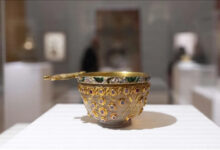14th-century Buddhist ‘sarira’ expected to return home from Boston next month | Partners | Belarus News | Belarusian news | Belarus today | news in Belarus | Minsk news | BELTA

SEOUL, 11 April (BelTA — Yonhap News Agency) — The Jogye Order, South
Korea’s largest Buddhist sect, is expected to reclaim next month the
remains of Buddhist monks from the country’s 14th-century Goryeo Dynasty
after their stay for 85 years in the United States.
The «sarira»
relics, believed to have been taken illegally out of South Korea, are
currently housed in the Museum of Fine Arts, Boston, one of the three
most prestigious art museums in the U.S.
After 15 years of
negotiations involving the Jogye Order and the South Korean government,
the museum agreed last month to donate the remains to the Buddhist sect.
The museum also agreed to push for the return of the culturally
significant reliquary containing the sarira on a long-term loan for
public display in Korea.
«A delegation from the Jogye Order will visit the Boston museum on
April 16 (U.S. time) to retrieve the sarira,» a Buddhist official told
Yonhap News Agency.
The exact date of the delegation’s return has not been decided yet, but it is expected to be sometime this month.
As
for the loan of the sarira reliquary, South Korea’s Cultural Heritage
Administration (CHA) and the Boston museum are known to be in
discussions over the timing and method.
Sarira is a Buddhist term
for bead-shaped bodily relics of spiritual masters. While sarira holds
great religious significance, sarira reliquaries carry additional
meaning in art history as they represent Buddhist crafts created by the
finest artisans of the time, reflecting contemporary styles.
The
«silver-gilt Lamaist pagoda-shaped sarira reliquary,» presumed to date
back to the 14th century in the Guryeo Dynasty (918-1392), is considered
a masterpiece of Goryeo Buddhist art.
It enshrines a total of
four sets of remains — one set of the remains of the Buddha himself,
alongside one and two sets of two revered Korean monks, Jigong and
Naong. The two monks are celebrated for their contributions to the
history of Korean Buddhism.
The CHA believes the sarira container was crafted after the latter monk passed away in the late years of the Goryeo Dynasty.
The
sarira reportedly was illegally taken out of the country during the
Japanese colonial period (1910-1945) before being purchased by the
Boston museum from a dealer in 1939. The CHA believes the sarira
originated from Hoeam Temple in Yangju, just north of Seoul.








